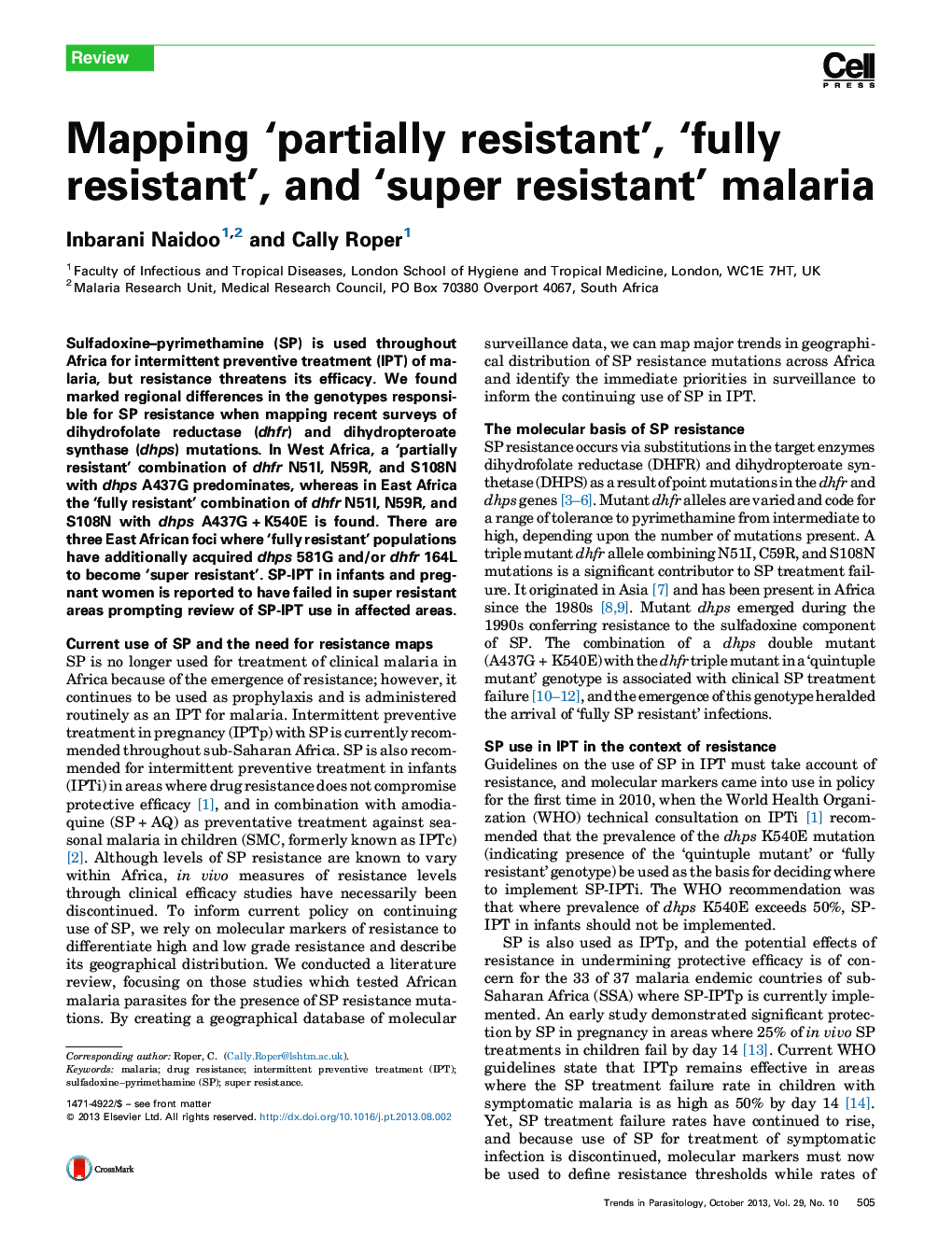| کد مقاله | کد نشریه | سال انتشار | مقاله انگلیسی | نسخه تمام متن |
|---|---|---|---|---|
| 3423081 | 1226986 | 2013 | 11 صفحه PDF | دانلود رایگان |

• Published data from SP resistance mutation surveys were collated and mapped.
• The regional distributions of key mutations indicate significant regional differences in SP efficacy.
• Partial resistance in West and Central Africa predicts continuing protective efficacy of SP-IPT.
• Fully resistant and super resistant genotypes are a cause for concern in East Africa.
• Deficiencies in the existing ad hoc surveillance system: patchy data coverage and 5 year lag to publication.
• Improvements to resistance surveillance, which incorporate technological advances, and regional data sharing are advocated.
Sulfadoxine–pyrimethamine (SP) is used throughout Africa for intermittent preventive treatment (IPT) of malaria, but resistance threatens its efficacy. We found marked regional differences in the genotypes responsible for SP resistance when mapping recent surveys of dihydrofolate reductase (dhfr) and dihydropteroate synthase (dhps) mutations. In West Africa, a ‘partially resistant’ combination of dhfr N51I, N59R, and S108N with dhps A437G predominates, whereas in East Africa the ‘fully resistant’ combination of dhfr N51I, N59R, and S108N with dhps A437G + K540E is found. There are three East African foci where ‘fully resistant’ populations have additionally acquired dhps 581G and/or dhfr 164L to become ‘super resistant’. SP-IPT in infants and pregnant women is reported to have failed in super resistant areas prompting review of SP-IPT use in affected areas.
Journal: - Volume 29, Issue 10, October 2013, Pages 505–515